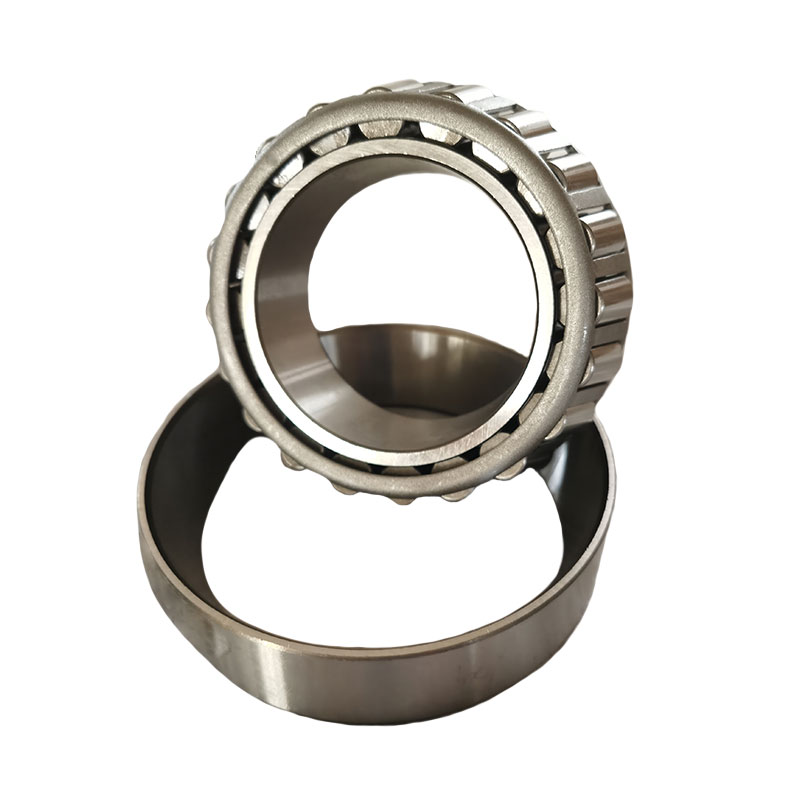Your Position: Home - Mechanical Parts & Fabrication Services - What are the types and applications of roller bearings?
Roller bearings are essential components in various machines and mechanical systems. They play a critical role in reducing friction and facilitating smooth motion. In this comprehensive guide, we will take a closer look at rolling bearings, exploring their types, applications, and maintenance practices to ensure optimal performance.

Roller bearings are mechanical components designed to reduce friction between moving parts while allowing rotational or linear motion. They consist of cylindrical, tapered or spherical rolling elements called rollers that separate the inner and outer bearing races. This design minimizes friction and allows efficient motion.
There are several types of roller bearings, each suitable for specific applications:
Cylindrical roller bearings: These have a high radial load carrying capacity and are suitable for applications with heavy radial loads, such as in electric motors.
Tapered roller bearings: Ideal for handling both radial and axial (thrust) loads, commonly found in automotive wheel hubs.
Spherical roller bearings: Designed to handle misalignment and heavy radial or axial loads, often used in mining and construction equipment.
Needle roller bearings: Compact and lightweight, these are suitable for applications with limited radial space, such as in gearboxes.
Roller bearings are used in various industries and applications, including
Automobile bearings: In wheel hubs, transmissions and engines.
Industrial Machinery: In conveyor systems, gearboxes and manufacturing equipment.
Aerospace: In aircraft landing gear and control systems.
Construction and Mining: In heavy equipment such as excavators and crushers.
Railroad: In train wheels and locomotives.
Roller bearings offer many advantages, including
Low friction: Reduced friction ensures energy efficiency and longer component life.
High Load Capacity: Can handle significant radial and axial loads.
Durability: Resistant to wear and tear for extended service life.
Versatility: Available in a variety of designs to suit specific applications.
Reduced vibration: Smoother motion results in reduced noise and vibration.
Proper maintenance is essential to ensure the longevity and performance of bearings:
Lubrication: Lubricate bearings regularly with appropriate grease or oil to minimize friction and prevent overheating.
Inspections: Periodically inspect bearings for wear, damage or misalignment and replace bearings as needed.
Alignment: Ensure proper alignment to prevent premature wear and failure.
Seals and Shields: Use seals and shields to protect bearings from contaminants and moisture.
Storage: Store replacement bearings in a clean, dry environment to prevent corrosion.
The selection of the appropriate rolling bearing requires consideration of factors such as load type, speed and operating conditions. Consultation with a bearing specialist or manufacturer is often advisable to ensure the correct choice.
Roller bearings are essential to the smooth operation of countless machines and systems in a variety of industries. Understanding their types, applications and maintenance requirements is essential to achieving optimum performance, minimizing downtime and extending the life of these critical components. Proper care and selection of bearings are key to ensuring the efficient and reliable operation of your machinery.
Suggested reading:208
0
0
Comments
All Comments (0)
Related Articles
Exploring the Dynamics of UAV Motors
In the fast-evolving realm of Unmanned Aerial Vehicles (UAVs), the heartbeat lies within the UAV motor. As technology propels us into a future where drones become ubiquitous, understanding the nuances of these motors becomes imperative.
By May
55
0
0
How efficient is the electric steam boiler?
Electric steam boilers are revolutionizing the way industries approach heating. Unlike traditional boilers, which rely on fossil fuels, electric steam boilers harness electricity to generate steam. This fundamental difference not only makes them eco-friendly but also remarkably efficient.
By May
40
0
0
Weir Type Diaphragm Valve: A Reliable Solution for Flow Control
In industries where precise control of fluid flow is essential, the choice of valves plays a crucial role. One type of valve that stands out for its reliability and efficiency is the weir type diaphragm valve. Designed to handle a wide range of applications, from corrosive chemicals to abrasive slurries, the weir type diaphragm valve offers exceptional control and durability
By Hou
142
0
0
Plug Valves: Versatile Flow Control Solutions
In the realm of flow control, plug valves have established themselves as reliable and versatile components. With their simple yet effective design, plug valves are widely used in various industries to regulate the flow of fluids.
By Hou
138
0
0
High-Pressure Quick Connect Nozzle Spray Gun: The Ultimate Tool for Efficient Cleaning
When it comes to tackling tough cleaning tasks, a high-pressure quick connect nozzle spray gun is a game-changer. This versatile tool harnesses the power of water under high pressure to blast away dirt, grime, and stubborn stains with ease.
By May
154
0
0
The Essential Guide to Overhead Conveyor Bearings: Everything You Need to Know
In the world of material handling and industrial automation, overhead conveyors play a vital role in streamlining operations and improving efficiency. At the heart of these systems are overhead conveyor bearings, critical components that enable the smooth and reliable movement of goods.
By May
146
0
0
The Benefits of Using Activated Carbon Filters in Your Home
In today's world, where air and water pollution are prevalent concerns, ensuring the quality of the air we breathe and the water we consume is crucial for our health and well-being. One effective solution for purifying both air and water is the use of activated carbon filters. These filters are designed to remove impurities, contaminants, and odors, providing numerous benefits for a healthier living environment.
By May
133
0
0
Drum Gear Coupling: The Backbone of Efficient Power Transmission
In the realm of mechanical power transmission, there are numerous components and mechanisms that play crucial roles in ensuring efficient and reliable operations. One such component is the drum gear coupling, a versatile device widely used in various industrial applications.
By Hou
133
0
0